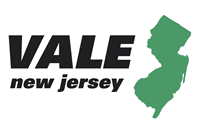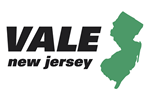|
VALE Users’ / NJ ACRL/NJLA CUS Conference
Thursday, January 5, 2006 |
“All Together Now: Taking the Lead in Collaboration and Innovation.”
Busch Campus Center
Rutgers University, Piscataway, NJ
Schedule of Events
| 9:00 am – 10:00 am | International Students’ Lounge Registration / Coffee / Poster Sessions |
|||||
| 10:00 am – 11:15 am | Center Hall Welcome Keynote Address: Nancy Davenport (Council on Library and Information Resources) Topic: Academic Libraries in the Digital World — The Collaboration Imperative For years academic libraries and librarians have been collaborating, even while their institutions were competing. But the digital world presents us both more opportunities for collaboration and reasons why collaboration is imperative for libraries to thrive and remain relevant. Reaction Panel: To be announced |
|||||
| 11:30 am – 12:30 pm | Morning Breakout Sessions | |||||
| 12:45 pm – 1:30 pm | Multipurpose Room LUNCH – Sandwich buffet NJ ACRL Update – Marc Meola State of VALE – Judith Cohn, VALE Executive Committee Chair Power Point | HTML |
|||||
| 1:30 pm – 2:15 pm | International Students’ Lounge Poster Sessions |
|||||
| 2:15 pm – 3:15 pm | Afternoon Breakout Sessions |
Morning Breakout Sessions
11:30 AM to 12:30 PM
a. Keynoter Follow-up
Nancy Davenport, (Council on Library and Information Resources)
b. Integrating RSS Feeds of New Library Acquisitions into a Course Management System
Edward M. Corrado, Heather Moulaison, Eric Thul (The College of New Jersey)
TCNJ Library, in collaboration with the campus IT department, has developed RSS feeds of new library acquisitions designed to be integrated into the college’s course management system. This session will provide an overview of the collaboration process and technical aspects of this project. PDF
c. A Closer Look at Instructional Design Tools
Christine Herz (Gloucester County College) HTML / FLASH
Utilizing an information literacy module developed for a particular class, the presenter will review the design process for creating an online demonstration or tutorial to accompany the module, using Visio for flowcharting and Macromedia’s Captivate to create a simple movie.
d. Build a Web-Based University Archive
Sharon Yang, Bob Congleton (Rider University)
Presenters will describe how they built Rider University’s web-based archive, including archive management issues and technical details. Power Point
e. Making Alliances: An Information Literacy Collaborative Effort
Valerie Gouse, Mary Thorstensen (Cumberland County College)
This session highlights a search strategy worksheet developed by the Librarians at Cumberland CC to be utilized in collaboration with Faculty developing information literacy exercises for their students. PDF
f. How Students Can ‘Google’ Your Library’s Catalog: Open WorldCat, RedLightGreen, and Google Scholar – Potential Impact on Resource Sharing
Ann Montanaro (Rutgers University) Power Point
Natalie Borisovets (Rutgers University) Presentation Power Point | HTML
[VALE Resource Sharing Committee]
Demonstrates and discusses how finding local library holdings in these new discovery tools might impact resource sharing and interlibrary loan.
g. Recipes for Success: Virtual and Live Collaborations of Rutgers Librarians, Departments, Students, and New Jersey Food Industry Partners
Martin Kesselman, Patricia Libutti, Karen Wenk, Ryan Womack (Rutgers University)
Rutgers’ librarians are collaborating with teaching faculty, students, and food industry partners to develop a virtual collaboratory, which provides the infrastructure for a new multidisciplinary course that involves the business community directly in the classroom learning environment. The project is supported through a USDA/CREES Higher Education Challenge Grant. This presentation will focus on the gestation of the idea and the synergy that comes from this non-traditional collaboration.
h. Marketing Online Reference on Campus
Nancy Madacsi (Centenary College)
Laura Kortz (New Jersey City University)
Richard Kearney (William Paterson University)
[VALE Reference Services Committee]
A panel discussion will focus on ways panel members market QandANJ on their respective campuses. A portion of the session will be devoted to brainstorming and identifying new ways to promote virtual reference service to faculty and students.
i. New Jersey Knowledge Initiative – Present and Future
Susan Kaplan (New Jersey State Library)
Judy Cohn (UMDNJ)
[VALE Executive Committee]
Find out how the business community is using the NJKI resources. An overview of use statistics will be presented along with discussion of ways to promote use of the NJKI resources on your campus and surrounding community. Join us to ask questions and discuss ways to demonstrate that funding for the NJKI resources should continue beyond June 2007. Power Point
Afternoon Breakout Sessions
2:15 PM to 3:15 PM
a. Library Website to Campus Gateway: Integrating Library Resources into a College Information Commons
Mark Thompson (Bergen Community College)
In collaboration with the college’s information technology and public relations departments, the Library at Bergen CC created an integrated gateway comprised of library e-resources, IT networked applications and college online tools. What are the most used functions on your homepage? What college functions are used in the student’s multitasking efforts? Can you partner with other departments in looking at solutions? Power Point
b. Building a Faculty Publications Database
Kathy Holden, Sharon Yang (Rider University)
Describes Rider Library’s experience in building a full-text based faculty publications database, including technical details and data management. Power Point
c. In-Person Co-Browsing at the Academic Reference Desk
Richard E. Stern (Seton Hall University)
Watch a live demonstration of in-person co-browsing between librarian and student at the reference desk, in operation at Seton Hall and Chinese Academy of Sciences. Compare the student’s level of involvement to what you observe at your reference desk and in digital reference co-browsing.
d. And the Database Choices for Next Year Are…
Luis Rodriguez (Montclair State University)
[VALE Electronic Resources Committee]
The VALE Electronic Resources Committee (ERC) invites discussion of the databases it has proposed that VALE offer for AY 2007.
e. MARC, MODS, Dublin Core, and More: What You Need to Know About Metadata for Your Digital Project
Rhonda J. Marker (Rutgers University)
Power Point
This session will look at criteria for choosing a metadata scheme, key metadata elements, and using metadata maps for display and export. It will demonstrate useful metadata documentation such as data dictionaries, user guides, and crosswalks. Participants are encouraged to share examples of their metadata documentation either in hard copy or online.
f. Working Towards Better Serving the Google Generation: Collaboration Between Libraries and Google
Cathy Weng, Jia Mi (The College of New Jersey)
This session will analyze the difference between Google and library OPAC: Why is Google so successful? What do users want that Google provides, but the library OPAC cannot? What can we learn from Google’s success?
g. Working Together on Projects That Work: Collaborative Information Literacy Initiatives
Vibiana Bowman, John Gibson, Theo Haynes, Naomi Marmorstein, Donna Wertheimer (Rutgers University)
[NJLA CUS/NJ ACRL User Education Committee]
Successful undergraduate information literacy projects, using high-tech, low-tech, and no-tech approaches, that were collaboratively planned by librarians and faculty members of Rowan University, Camden County College, and the Psychology Department and the Writing Program of Rutgers Camden.
h. Information and Communications Technology (ICT) Literacy Assessment: Ready for Middle States?
Teresa Egan, Irvin Katz (Educational Testing Services)
Richard Sweeney (NJIT)
Anne Ciliberti (William Paterson University)
[VALE Shared Information Literacy Committee]
Representatives from Educational Testing Services will present their new interactive computer-based ICT assessment tool. See the sample questions and discuss the impact of this tool. The ICT instrument features interactive tasks (scenarios) using simulated software, tasks of varying lengths, and evidence-based design. Scalability and sustainability have been key goals in its development. So far, over 4,000 examinees on 40 campuses have taken this test, which can provide information for: accreditation, institutional improvement, and individual certification.

